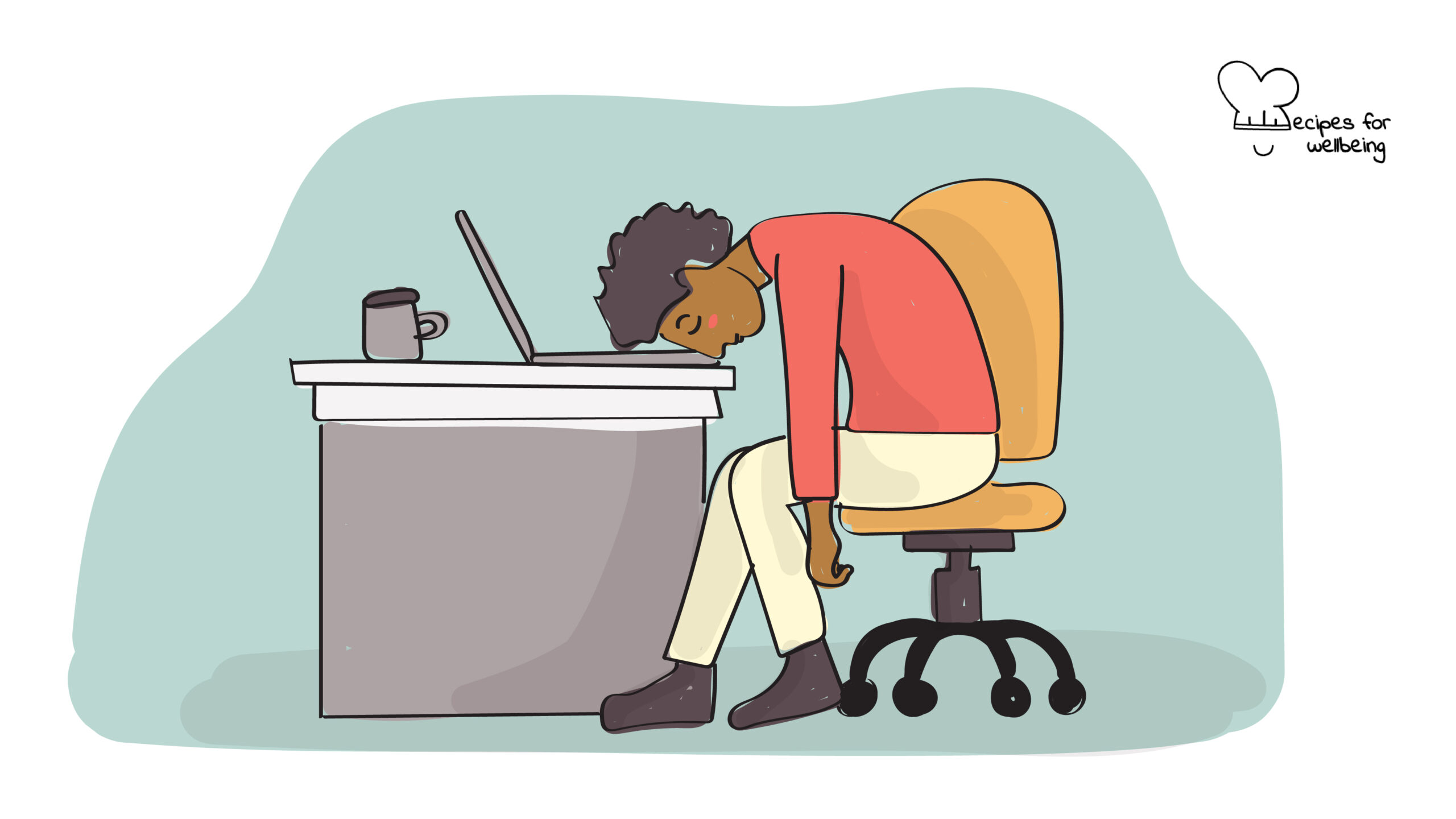
Mental health for employers
You cannot recover from anxiety by just staying calm. You cannot recover from depression by just being positive. You cannot recover from anorexia nervosa by just eating more. If mental illnesses were that simple, we wouldn’t be struggling in the first place.
👥 Serves: Up to 100 people
🎚 Difficulty: Hard
⏳ Total time: Ongoing
🥣 Ingredients: –
💪 Nutritional values: Motivation, Performance, Positivity, Connection, Fulfillment

Mental health for employers
📝 Description
A step-by-step toolkit to boost mental health at work.
Mental health is an integral part of how we feel about our jobs, how well we perform, and how well we interact with colleagues, customers, and clients. With 3 in every 5 employees currently experiencing mental ill-health because of work, mental health is an essential business concern. There is a strong relationship between levels of staff wellbeing and motivation and performance. Taking a positive, pro-active approach to mental health at work can help you grow your staff and your organisation.
Every organisation has an opportunity to support and develop a mentally healthy workforce and it doesn’t need to be complicated. The Prince’s Responsible Business Network “Mental Health for Employers Toolkit” was developed to help you understand and act, step by step.
👣 Steps
Step 1 – Making a commitment
- There is a clear commitment from the senior level of the organisation that mental health matters and that it will work to promote good mental health, support those that need it, and challenge the stigma.
- This commitment is stated in a form that is visible and understandable to all employees. This may include signing the Time to Change Employers Pledge.
- The organisation appoints a senior level employee to be the Mental Health Champion to drive forward this commitment. This Champion is supported by a working group that helps to support the Champion and develops and implements the commitment.
Step 2 – Building your approach
- The senior team understands and acts on all its legal requirements around workplace mental health and risk management – the rights of employees are communicated to all employees.
- The organisation assesses the mental health needs of its employees, understands where improvements are needed, and identifies clear objectives for development, along with the business case for doing so.
- Mental health is reflected in all relevant workplace policies and a plan for delivering mental health is in place, with clear actions that can be achieved and reported back on every six months or every year.
Step 3 – Fostering a positive culture
- There are effective management standards in place that ensure employees feel supported and valued.
- The organisation ensures that the workplace environment is conducive to promoting healthy behaviours and limits the potential for it to cause ill-health.
- There is a system in place, such as risk assessments, to prevent stress.
- Job design and roles are reviewed so as to ensure they are appropriate and conducive to productive work.
- Social activities, volunteering, and out-of-work activities are actively encouraged and supported by the organisation.
- The organisation provides appropriate avenues and frequency of communication to keep all staff at all levels informed of the approach to wellbeing.
Step 4 – Offering support and training
- The structure of the organisation ensures that information is freely shared and every employee knows how to access support and whom to approach for further support.
- The organisation recognises the key role in effective line management in driving good mental health and wellbeing.
- All line managers receive training in mental health and all employees are educated to increase their mental health literacy and to recognise the signs that they may need support.
- The organisation builds mental health awareness into all induction programmes.
- Performance reviews allow employees to comment on issues that affect their performances and enables training needs to be identified.
Step 5 – Managing mental health
- The organisation takes a pro-active approach to ending mental health stigma in the workplace.
- Mental health is discussed openly in team and company meetings as well as 1-2-1 and in performance reviews.
- All employees are supported to reduce the potential to experience stress and organisational changes are made when risks are identified that may lead to stress or other mental ill-health. Adopt the HSE’s management standards for work-related stress.
- Every employee knows how to access information on the company’s approach and further information about mental health and wellbeing.
Step 6 – Providing the right support
- Managers are trained and are confident in how to handle sensitive conversations around mental health. Check out our recipe “Talking mental health in the workplace” for skills to develop to talk about mental health concerns in your team.
- The organisation is prepared to make adjustments to work patterns and structures for anyone experiencing difficulties to keep them in work.
- The organisation provides a confidential support service in-house or externally to individuals who come forward with a problem.
Step 7 – Helping people recover
- Employees who experience ill-health and have to take time off work are supported to make a speedy and appropriate return and adjustments are made for their successful return to work, through regular contact with their manager.
- The organisation is equipped to provide support through such government initiatives as Fit for Work and Access to Work to ensure people who experience mental ill-health can continue to work successfully.
Step 8 – Going further
- Staff consultations/surveys take place to seek information on the mental health and wellbeing of staff and also cover working conditions, communication, work-life balance, staff support and work-related or other causes of stress, with action plans drawn up to address major issues.
- The organisation regularly evaluates its approach to mental health and identifies areas it can develop in, reporting back on its progress to all employees.
- It also shares its approaches with other organisations to share best practices and learn ideas for new approaches.

